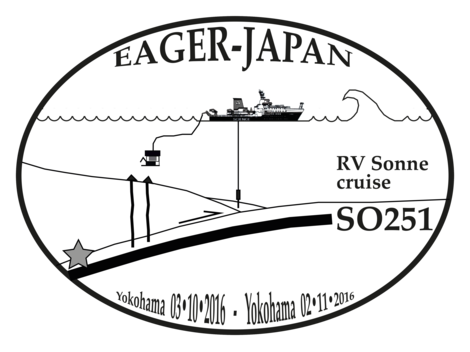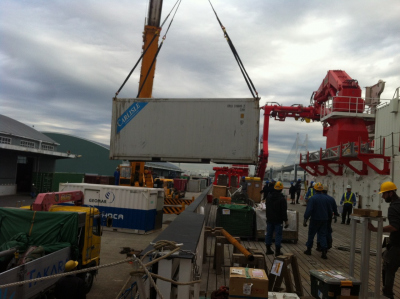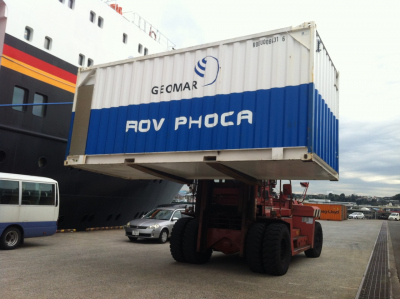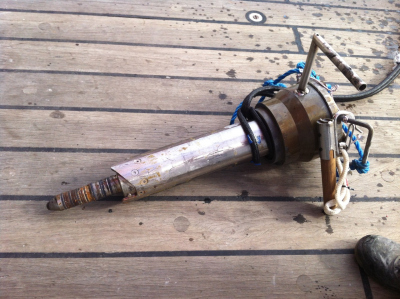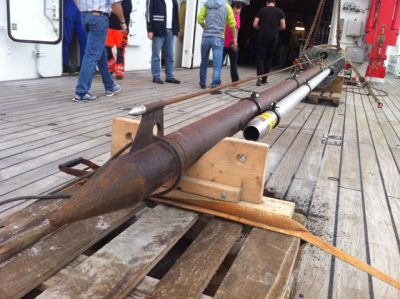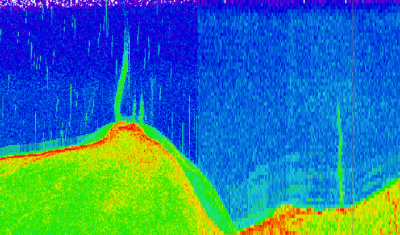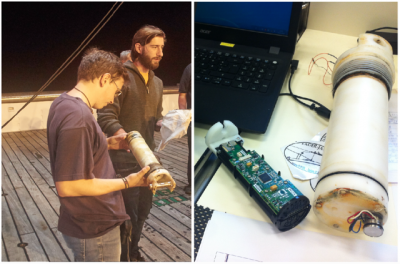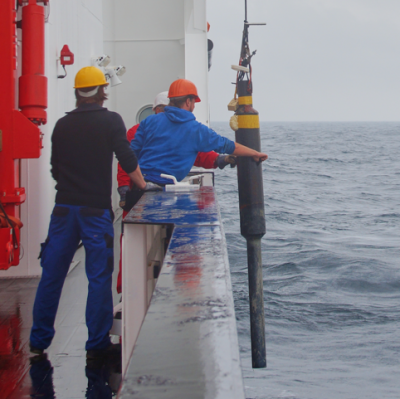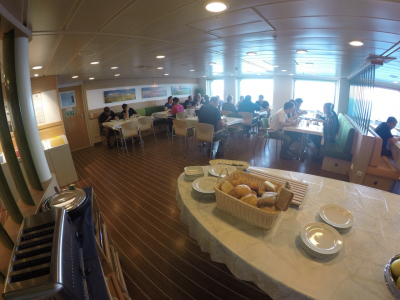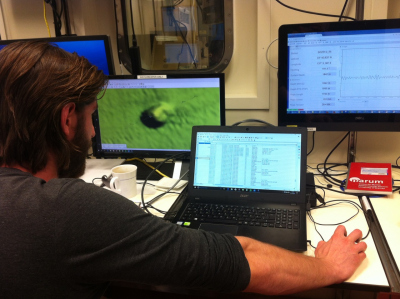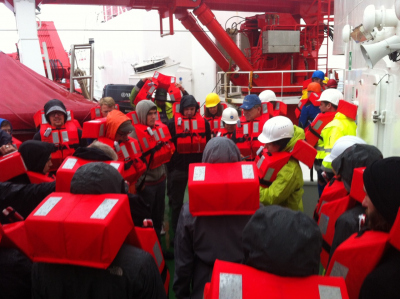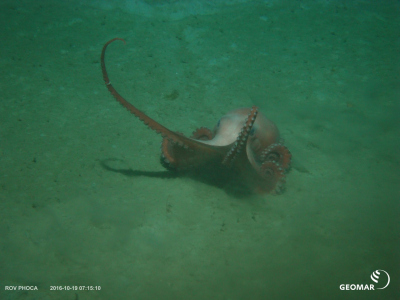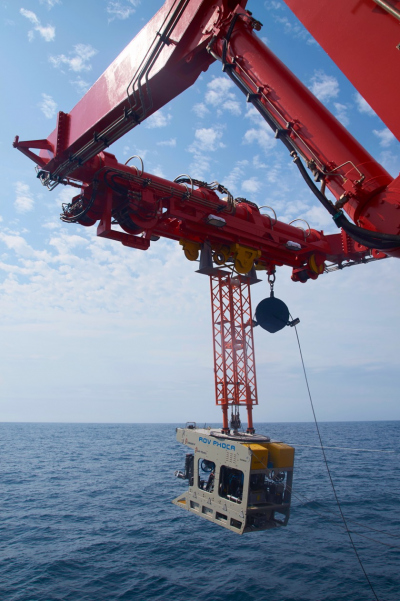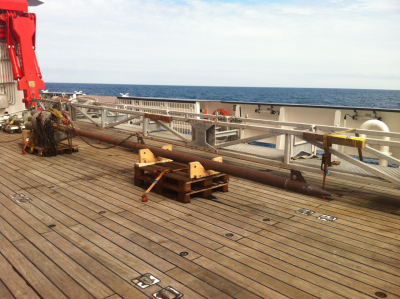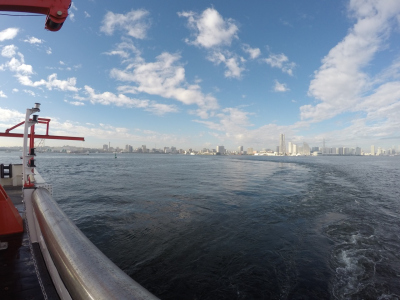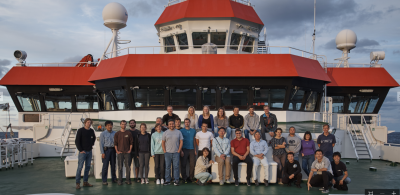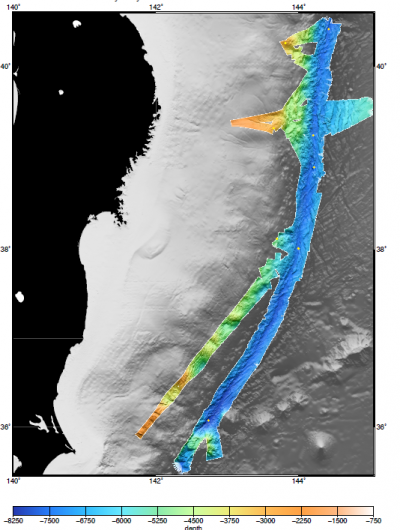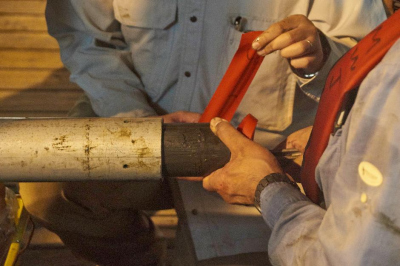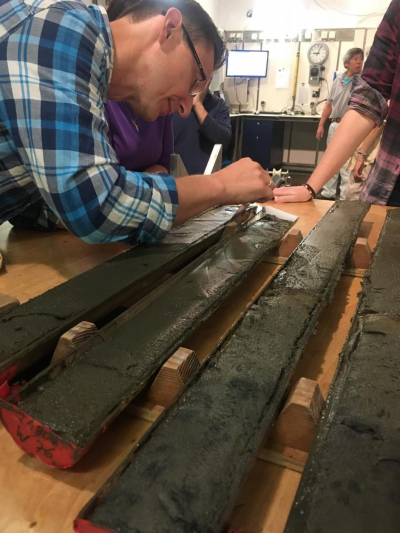- Home
- Discover
- Ship's logs
- Logbuch SONNE 251
Logbuch SONNE 251
Yokohama to Yokohama
Extreme events Archived in the GElogical Record of Japan’s Subduction margins (EAGER-Japan)
At the southeastern edge of the Eurasian Plate, Japan hosts two of the most interesting subduction systems, both prone to devastating megathrust earthquakes: The Japan Trench (JT) east of Honshu with subduction erosion/subsidence in the north, and the Nankai Trough (NT) with a huge accretionary prism in the southwest. In 2011 the Japan Trench area was struck by a Magnitude 9 earthquake that caused unusually large slip all the way to the trench, and a series of landslides which are believed to be partly responsible for amplification of the catastrophic tsunami following the event. At Nankai, frequent Magnitude 8+ earthquakes are also documented, and landslides and other sediment remobilization processes related to seismicity are attested.
The overarching goal of R/V Sonne cruise SO251 and subsequent post-cruise research is to investigate fluid- and sediment mobilization processes by mud volcanism, earthquake-triggered seafloor displacement, submarine landslide and related “paleoseismologic event deposits” and to compare inferred earthquake processes and rates along accretionary vs. erosive subduction margins of Japan (Nankai Trough and Japan Trench, respectively).
The cruise is divided into two parts: We will first conduct mapping and coring along the deep Japan Trench and along the upper slope and forearc escarpment from 36°N to 40°N. After a short mid-cruise port-call to partly exchange the science crew and uptake ROV and ROV team, we will then continue to the Kumano Basin in the Nankai Trough working area to pick up instruments in the mud volcano field by ROV followed by further mapping, coring and detailed video surveying of seafloor in the shallow splay fault area.
Post-cruise science will be coordinated among the international science party. With SO251 we will establish a bathymetric and sedimentary inventory of mass-movements, chronology of extreme-event deposits and their paleoseismologic interpretation. It further will investigate geotechnical aspects of earthquake-triggered mass wasting processes to allow for quantitative interpretation and comparison of the established event catalogue. We also will illuminate the relationship between mud volcanic activity (mudflows, seepage, etc.) and local seismicity by using long-term data, time series samples and additional core/data from the cruise. Anticipated conceptual advance in our understanding of sediment dynamic processes related to subduction zone earthquakes are expected to be transformative and may well apply for other active convergent margins worldwide, not just Japan and the circum-Pacific.
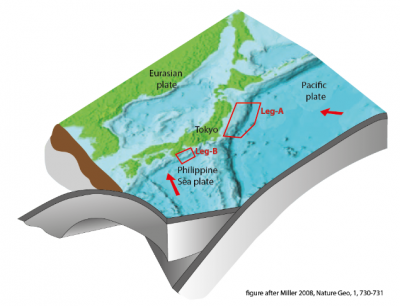
November 2nd
For the entire day, both the main deck and laboratories, got extremely busy with people packing gear while a large Japanese crane was lifting crates and containers off the vessel and delivered a reefer (i.e. chilled container which is shipped at 4°C) for our cores and fluid samples. Both our Japanese colleagues, the Kiel ROV team and MARUM scientists packed their materials to the various boxes and containers very quickly given that the next day is a holiday in Japan. In the evening, everybody was exhausted but happy about the successful cruise after a month at sea and looks forward to be at home soon.
The major part of the research will start in only 5-6 weeks from now, when the containers will arrive back in Bremen and sample analyses starts in the various laboratories in Bremen, Innsbruck and Japan.
The reefer is lifted onto the main deck to facilitate packing of cores and other equipment.
Photo: A. Kopf, MARUM
October 31st
We are now approaching the final stations to work at and look forward to the journey home after four weeks of operations.
October 30th
So far, we used the „new“ instrument in three locations successfully with core recoveries of up to 2 meters. In the meantime, the ROV PHOCA team was busy to set the stage for their final dive on this expedition. Stay tuned.
The new „Heat flow corer“, an improvised sampling device developed on board, on deck before being deployed in the Kumano Basin.
Photo: A. Kopf, MARUM
October 28th
At the moment, the Japanese weather holds many major surprises for us: heavy rain and sunshine as well as changing winds from various directions, so that we have to exploit very short fair weather windows to deploy the ROV. While we were successfully recovering the SmartPlug piezometer today, we were even more lucky yesterday when two instruments were recovered at night. PHOCA unscrewed the so called MeBoPlug from the MeBo drill string set in 2012, which contained a 4+ years time series of data that will help unravel the relationship between mud volcanic activity and seismicity.
The „MeBoPlug“, a small borehole observatory set with the MARUM seafloor drill rig, is handed from the ROV team to observatory experts Walter Menapace and Timo Fleischmann after the end of the dive. Data worth 720 Mbyte that document the mud volcano evolution over 4 years are downloaded to a laptop.
Photo: A. Kopf, MARUM
October 27th
Because the fresh air and working hours enhance our appetite, Andre Garnitz and his team work hard to have food available at all times. Up to more than 75 bread rolls are baked on RV SONNE each day, and since the cook has many different tasks, he is assisted by a robot which appears to be a R2D2 look-alike. The dishes on SONNE are fabulous – sometimes one even forgets that this is not a restaurant but a working platform.
Mess room of RV SONNE, which is accessible 24/7 for day and night shifts of scientists and crew, and can get crowded during meal hours.
Photo: A. Kopf, MARUM
October 26th
At first, everybody gathers at the muster station once the earsplitting alarm invades every corner of the vessel. Each person is then registered and assigned a life boat.
Whilst the scientists are excused afterwards, the crew has to follow through the scenario and, thus, masked crew members in full PPE wander over the deck and along the corridors as a fire brigade.
At that point, we were already back in the lab to continue the heat flow survey over mud volcano MV1. As already anticipated from the short, deformed piston core on this hill, we had trouble penetrating the carbonate crusts with our instrument.
The HF team, here Timo Fleischmann, is monitoring the performance of the device from screens in the ship’s laboratory.
Photo: A. Kopf, MARUM
October 25th
One of the most challenging tasks was to tie the relatively short mud volcano cores into the larger picture of the Nankai Trough geological evolution. Opening a less than one meter long core from mud volcano MV1 was particularly exciting, because we suspected hard rocks given that our coring device got partly damaged during penetration of the seafloor. In the split core we discovered numerous hard carbonate rocks of several centimeters thickness, which originate when methane gas precipitates on the seafloor. By doing so, some of the geochemical information is preserved in these "frozen“ pore waters. They hence witness temporal changes in the geodynamic eolution and allow us to reconstruct the mud volcanic activity in the past.
The majority of these clasts appeared to be pieces of chimney structures along which methane migrated upwards before it got oxidised. Unfortunately, we now have to wait for detailed analytical results after the cruise before we know the exact depth of origin of these fluids.
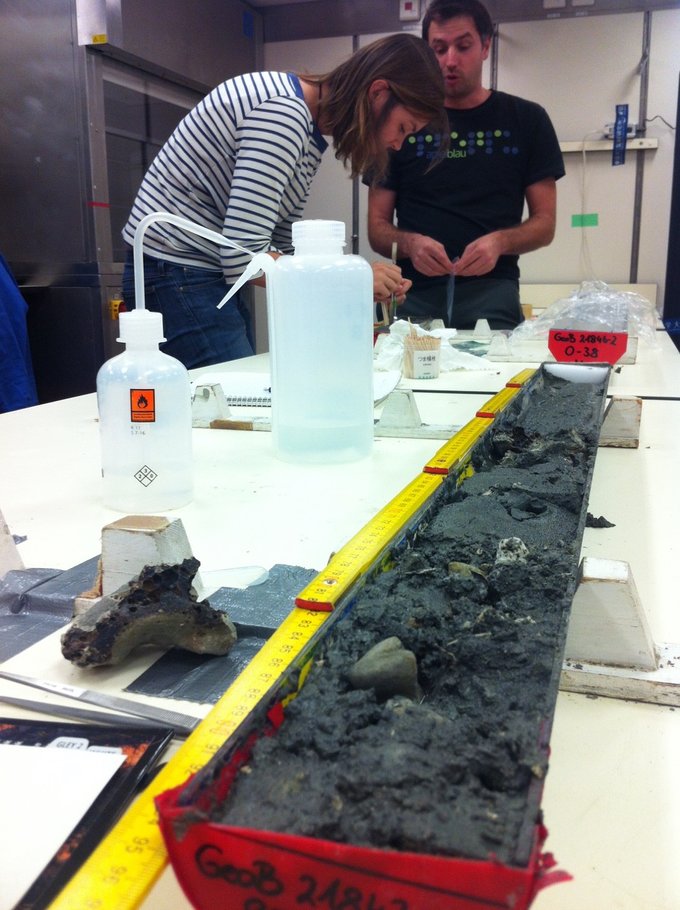
In a piston core from mud volcano MV1, we observe sediment deformation and numerous carbonate crusts (next to core). In the background, scientists Jana Molenaar and Jasper Moernaut analyse individual samples. Photo: A. Kopf, MARUM
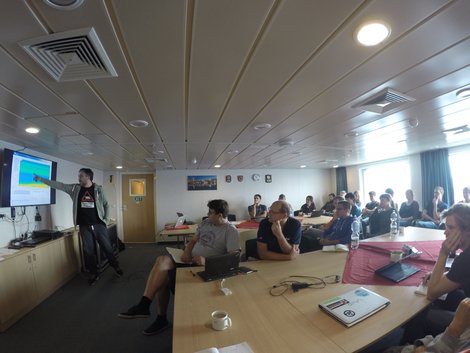
During a science meeting in the conference room, we exchange and discuss results as presented in short talks. Here, Christian Ferreira reports on newly discovered flares. Photo: A. Kopf, MARUM
October 24th
Coring was difficult yesterday because the sites were located in the Kuroshio current, which reaches velocities in the order of four knots at the surface. As a consequence the piston corer is deviated along the wire and ends up a few hundred meters behind the ship when reaching the seafloor. A precise coring traget can hence only be met when manoeuvring on the bridge is brought to perfection, in particular since there are numerous seafloor cables for tsunami early warning offshore Japan. Operations were further hampered by an upcoming storm with wind speeds of 7 to 8 Beaufort.
Coring was nonetheless successful and the scientific team is looking forward to analysis and interpretation (but also an occasional break enjoying a match of table soccer).
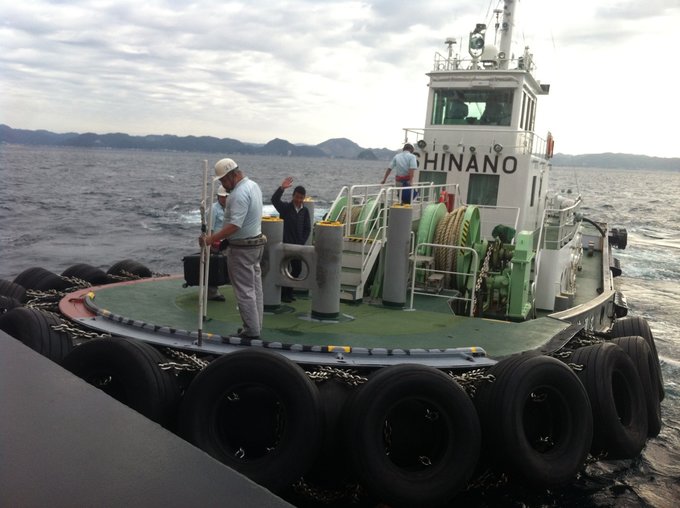
The pilot boat Shinano visits RV Sonne close to Yokohama to pick up the Japanese coring technician Ei Hatakeyama, who is needed on a different expedition. Photo: A. Kopf, MARUM
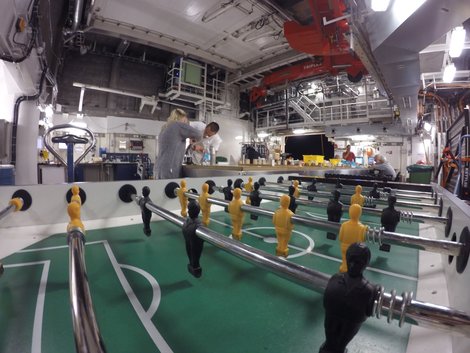
In the hangar of RV Sonne, scientists Neeske Lübben and Alex Rösner work on one of the last piston cores. After work, they may have time for a table soccer match. Photo: A. Kopf, MARUM
October 22nd
After a short survey PHOCA located one of the instruments, which is connected to the deep borehole via a hotstab and tubing so that pressure and temperature monitoring can provide us with insights to sediment deformation processes prior and during earthquakes. The actual observatory is a short stainless steel cylinder that connects to the deep borehole via a hotstab. Unfortunately, the hotstab connection was too tight to be loosened by ROV. Instead, the skillful handling by the ROV pilots allowed us to unscrew the entire MeBo drill rod underneath the instrument. The assembly was then too long and too heavy to be taken away by PHOCA so that it will require a second dive to safely recover the instrument.
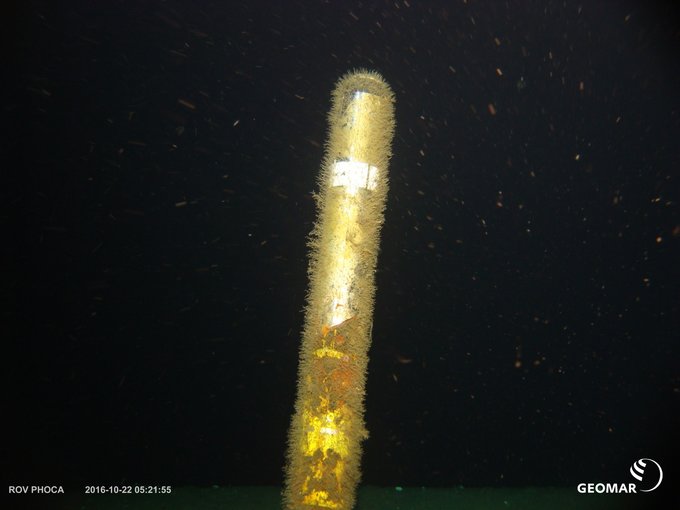
ROV PHOCA locates the MeBoCORK observatory which is covered in organisms after four years of deployment. Photo: ROV GEOMAR
October 21st
We have meanwhile recovered piston cores from both the Kumano Basin fill and mud volcanoes, the latter of which showed interesting pore waters of assumed deep origin within the accretionary complex. The transformations of clay minerals with increasing pressure and temperature releases fresh water from the mineral lattice and causes lower salinity, but enrichment in other elements.
The exact chemical composition will be analysed post-cruise and will then be indicative of the pressure and temperature regime of the fluid processes. Also, the clasts contained in the extruded mud will allow us to geodynamically reconstruct the evolution of the Nankai subduction system.
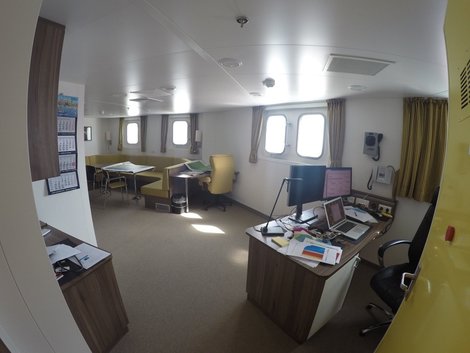
View into the chief scientist’s cabin on RV Sonne where strategies are discussed and station plans are made. Photo: A. Kopf MARUM
October 19th
We studied a gas hydrate bearing mud volcano, a small underwater hill which evolves from mud, water and gas extruding from depth. With a temperature probe we located the area of maximum activity, which is southwest of the summit and where thermal gradients are a few 100°C per kilometer.
Apparently, fauna is also attracted by the dynamic submarine setting. We saw giant crabs, fish, shrimp and small organisms. An octopus was apparently not so amused about our visit with the bright ROV headlights and wanted to get in a fight.
Octopus on mud volcano in the Kumano Basin, Japan
Photo: ROV GEOMAR
October 18th
We also had a team from GOOGLE Culture visiting to acquire video footage. The material will serve for a virtual ship tour on RV SONNE, which will soon be available on the internet.
In the evening we arrive in the new research area for Leg 251-2 and ran a heat flow survey across an active mud volcano all night.
Heat flow probe on deck prior to being deployed on the mud volcano
October 17th
During our short voyage we mapped the entire along-strike extent of the Japan Trench from 36° to 40.3° N, to now have a complete high-resolution bathymetric map of the trench axis and nearly 2000 km of sub bottom Parasound profiles. We also succeeded to take six 10m long piston cores from more than 7000km water depth, which allow to document and compare the sedimentary processes and extreme-event deposits from the southern to the northern part of the Japan Trench.
Furthermore we could core 3 slope sites of representative location of the landward slope of the subduction system. For each of these slope sites we retrieved two cores, one of which is kept closed and will be analyses by the Marine Geotechnics research group at MARUM to study strength and deformation behavior upon dynamic stresses simulating different earthquake shaking scenarios. With such experiments, we aim at assessing critical earthquake intensities needed to trigger sediment remobilization, towards quantitatively calibrating the geological record of extreme earthquake for past earthquakes.
SO251-A Science Party (from left to right: Gauvain Wiemer, Yukihiko Nakano, Dominik Jaeger, Timo Fleischmann, Katarina Bachmann, Marie Rex, Martin Kölling, Christian dos Santos Ferreira, Sebastian Trütner, Karl Lange, Jasper Moernaut, Neeske Lübben, Kazuko Usam, Alex Rösner, Mareike Höhne, Asuka Yamaguchi, Jana Molenaar, Toshyia Kanamatsu, Michael Strasser, Paul Töchterle, Ken Ikehara, Tobias Schwestermann, Jess Hillmann, Toshyia Fujiwara, Matt Ikari, Cecilia McHugh, Tian Sun, Witold Szczucinski, Arata Kioka)
Last but not least, we successfully retrieved a core from the very same location, where we cored the deep sea trench sediment during previous Sonne cruise SO219-A in 2012. At that time, the geochemists documented striking anomalies in porewater-geochemistry data, which are interpreted to be transient signals induced by remolding and resedimentation triggered by the Tohoku-earthquake. Now, 5 ½ year after the earthquake, we repeat the porewater and solid phase geochemistry analyses at this location to study the transient signal and assess post-depositional processes and rates to learn how the event-deposit becomes archived in the geological record and what distinct chemical signals remain.
Almost half of the science party of the first leg disembarked during the short port-call in Yokohama, including Jess Hillmann, who was contributing the ship’s log entries during the first leg. In exchange, Achim Kopf as chief scientists of the second leg, the Geomar ROV Team, heat flow and seafloor observatories specialists from Bremen, as well as international scientists from partner institutions embarked the ship today. We are getting ready for sailing to the Kumano Basin in the Nankai Trough Subduction zone working area, from where we will report in the next blog.
October 12th
Core sections being removed from the barrel on deck. Photo by Sebastian Tütner.
In the last few entries we have discussed the entire core processing workflow on board the ship, but there is one other very important group working on board – the hydroacoustics team. We’ll talk more about their work next time!
October 8th
Waves crashing over the ship! Photo by Tobias Schwestermann.
Some of the physical property group (Mareike Höhne, Marie Rex and Sebastian Tütner) at work in the lab. Photo by Tobias Schwestermann.
October 8th
Dr Martin Kölling and Paul Töchterle setting up the rhizons to sample porewater from the sectioned core. Photo by Jess Hillman
October 6th
The piston core setup is first assembled on deck, this consists of a very heavy (1.1 tons!) weight at the top, connected to a 10 m long metal core barrel, which is lined with a hard, clear plastic tube - the core liner. A piston connected to a cable is then run through the barrel, and the end is capped with the core catcher. Once it is assembled, the piston core is lowered over the side of the ship on a cable. A second, short, 1 m trigger core is attached to the cable by a metal arm above the main piston core. The purpose of this is to act as a ‘trigger’ (hence the name!) for the piston core to fire once it reaches the seafloor. The whole assembly is lowered slowly to the seafloor (in >8000 m of water this takes a few hours!), and once the trigger core hits the seafloor the main piston core is ‘fired’, driving it deep into the sediment. We then wait a few more hours while the recovered core is very slowly winched back up the ship, and brought back onto the deck using a cradle.
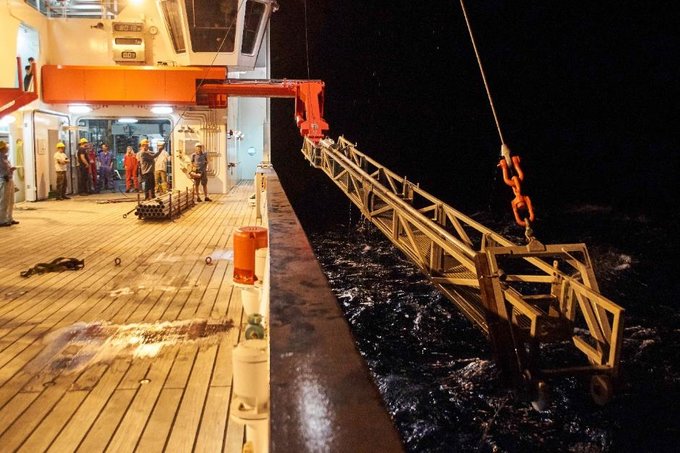
The first core is brought on deck in the cradle.
Photo: Sebastian Trütner
We woke today to wave heights in excess of 4 m, resulting in a rather rocky ride! Nonetheless we were excited to open up the core and start work. Each section of the core is first split into two halves lengthways, one is the working half, which we use for geotechnical measurements and sampling, and the other is the archive half, used for describing the sedimentology. The archive core is kept in pristine condition and will not have any samples taken onboard, this means it can be kept in storage back in Bremen for future research work to be done. We’ll go into more detail regarding the geochemical, geotechnical and sedimentology analysis that is done onboard in the next few blog entries. For now we are busy examining lots of lovely mud!
October 4th
All of the scientists are now safely on board and we have had plenty of time to prepare our labs and start discussing scientific objectives. The saying goes that “necessity is the mother of invention”, and as our cruise time is being cut short, and some of our gear is missing, we have been trying to prioritise and improvise in order to achieve all of our aims, which has led to the ‘invention’ of several new ways to collect and process core samples. In spite of all this, we are looking forward to collecting valuable new data, hopefully resulting in some exciting new discoveries and ideas. We started today with a ‘mini-conference’ where several scientists on board gave short talks on their previous research in the area, this gave those of us who are less-experienced a valuable introduction, and led to some really interesting discussions of new research concepts.
The only remaining obstacle between us and our survey area now is the imminent arrival of Typhoon Chaba, which is forecast to cross the Japan Trench on the 5th. We will keep an eye on the forecast and sea conditions and plan our movements to stay away from the worst of it, whilst hopefully getting underway with data collection. We may still encounter some rough seas though, so the ship’s doctor, Anke, has been preparing for any sea sick scientists!

Leaving Yokohama with the port and the Bay Bridge in the background.
Photo: Jess Hillmann
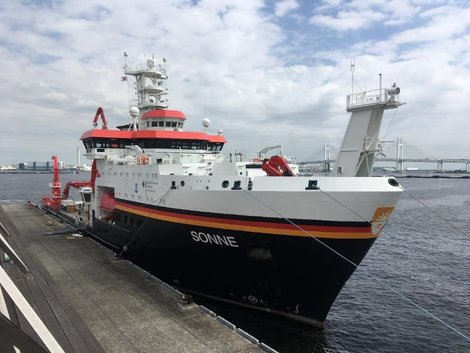
R/V SONNE in Yokohama Port with the Bay Bridge in the background.
Photo: Jess Hillmann



